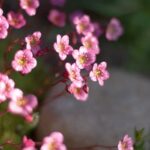Are you looking for new and unique landscaping ideas to transform your outdoor space? Look no further than egg rock landscaping. Whether you’re aiming for a modern, minimalist look or a more natural and rustic feel, egg rocks can add texture, color, and visual interest to any garden or yard.
In this article, we’ll explore the beauty of egg rock landscaping and provide you with all the inspiration and tips you need to incorporate this versatile material into your outdoor design. From creative uses to maintenance tips, we’ve got you covered.
Egg rock landscaping ideas offer a stylish and modern alternative to traditional mulch or gravel. These smooth, round stones come in various colors, including white, tan, gray, and black-making them perfect for adding depth and contrast to your outdoor space. Whether you’re creating a pathway, edging a flower bed, or building a water feature, egg rocks can elevate the overall look of your landscape.
When it comes to using egg rock in landscaping projects, the possibilities are endless. In this article, we will discuss the benefits of using egg rock in your landscape design as well as different types of egg rocks available in the market. We’ll also delve into planning and designing your project, incorporating plants and flowers with egg rock, creative uses for these stones in landscaping features such as pathways and water elements.
And if that’s not enough inspiration for you-we’ll provide plenty of stunning ideas for different types of outdoor spaces. So read on to discover how you can bring the beauty and versatility of egg rock to your landscaping.
Benefits of Using Egg Rock in Landscaping
Egg rock, also known as river rock, can bring a unique and natural aesthetic to any landscaping project. Whether you are looking to create a serene garden space or a modern outdoor design, egg rock can be a versatile and stylish addition. In this section, we will explore the benefits of using egg rock in landscaping and how it can enhance the overall look and feel of your outdoor space.
Natural Beauty and Texture
One of the main benefits of using egg rock in landscaping is its natural beauty and texture. The smooth, round shape of the rocks adds visual interest to any area, while the variety of colors available – from warm browns to cool grays – can complement any design scheme.
Whether used as a focal point in a garden bed or as a decorative feature in a water feature, egg rock adds an organic element that enhances the overall appeal of your outdoor space.
Durability and Low Maintenance
Another advantage of using egg rock in landscaping is its durability and low maintenance requirements. Unlike mulch or other ground covers, egg rock does not break down over time, meaning it can last for many years without needing to be replaced.
Additionally, it does not need regular watering or upkeep, making it an ideal choice for busy homeowners or those looking for a low-maintenance landscaping option. This makes egg rock an excellent choice for areas that experience hot weather or heavy foot traffic.
Water Permeability
Egg rock is an excellent choice for areas that require good drainage due to its natural water permeability. When used in pathways or around plants, it allows water to filter through the rocks and into the soil below, helping to prevent erosion and maintain healthy plant growth. This makes egg rock an environmentally-friendly option for landscaping projects that prioritize sustainability and proper water management.
By considering these benefits, you can see how incorporating egg rock into your landscaping plans can add both visual appeal and practical functionality to your outdoor space. Whether you are planning a small garden revamp or a large-scale backyard makeover, egg rock can be an excellent choice for enhancing the beauty and functionality of your landscape design.
Types of Egg Rock for Landscaping
When it comes to egg rock landscaping, there are various types of egg rocks that you can use to enhance the beauty of your outdoor space. Each type comes with its own unique characteristics and can be used to achieve different landscaping designs. Here are some popular types of egg rock for landscaping:
- Mexican beach pebbles: These smooth, round stones come in a range of colors, from black and gray to shades of brown and red. They are great for creating a modern, sleek look in your landscape design.
- River rock: This type of egg rock is typically larger and more irregular in shape compared to Mexican beach pebbles. It is great for creating a natural and rustic feel in your outdoor space.
- Polished marble eggs: These elegant and glossy stones come in various colors like white, beige, and even pink. They add a touch of sophistication to any landscaping design.
Each type of egg rock offers its own aesthetic appeal and can be used in different ways to achieve the landscaping look you desire. Whether you’re aiming for a contemporary, earthy, or elegant style, there’s an egg rock type that’s perfect for your landscaping project.
Incorporating these different types of egg rocks into your landscaping design can create depth, texture, and visual interest. You can mix and match these stones to add contrast and create focal points within your outdoor space. With the right combination of egg rocks, you can transform your landscape into a stunning work of art that reflects your personal style.
Making informed choices about the types of egg rock you use in your landscaping project will ensure that you create the perfect ambiance for your outdoor space. Whether you want to create a tranquil garden or a vibrant entertainment area, selecting the right type of egg rock will set the tone for your entire landscape design.
Planning and Designing Your Egg Rock Landscaping Project
When it comes to planning and designing your egg rock landscaping project, there are several important factors to consider. The first step is to assess the size and layout of your outdoor space. This will help you determine how much egg rock you will need and where it will be placed.
Next, consider the overall aesthetic you want to achieve with your landscaping project. Egg rock can be used in a variety of ways, from creating natural-looking pathways to adding contrast and texture to garden beds. Take some time to envision how you want the egg rock to enhance the overall look of your outdoor space.
Once you have a clear vision for your egg rock landscaping project, it’s important to take accurate measurements of the areas where the egg rock will be placed. This will ensure that you purchase the correct amount of material and avoid any unnecessary waste. Additionally, consider the color and size options for egg rock as it comes in various shades such as white, tan, and red, and sizes ranging from pea-sized gravel to larger river rock.
| Planning Tips | Design Tips |
|---|---|
| Assess outdoor space size and layout | Envision how egg rock will enhance overall look |
| Take accurate measurements for material | Consider color and size options for egg rock |
Incorporating Plants and Flowers With Egg Rock in Your Landscaping
When it comes to landscaping, incorporating plants and flowers with egg rock can create a beautiful and harmonious outdoor space. Whether you are looking to add a pop of color, texture, or variety to your egg rock landscaping, plants and flowers can truly enhance the overall look and feel of your design.
Choosing the Right Plants
When selecting plants to complement your egg rock landscaping, it’s important to consider the climate, sunlight exposure, and soil conditions in your area. Opt for plants that thrive in similar conditions as the egg rock to ensure they will flourish in your landscaping design. Succulents, ornamental grasses, and low-growing groundcovers are popular choices for pairing with egg rock due to their low maintenance requirements and ability to thrive in rocky environments.
Creating Contrast
Incorporating a variety of plants and flowers with different colors, heights, and textures can create a visually appealing contrast against the smooth and uniform appearance of egg rock. Consider adding vibrant flowering plants such as lavender, daisies, or petunias to bring a splash of color to your landscaping. Additionally, taller shrubs or ornamental grasses can provide an interesting vertical element when paired with the flat surface of egg rock.
Arranging Your Plantings
Strategically placing your plants and flowers within the egg rock landscaping is key to achieving a balanced and cohesive look. Grouping similar plant species together can create visual impact while also simplifying maintenance tasks such as watering and pruning. When designing your layout, consider using natural stone borders or raised planter beds to help define specific planting areas and prevent the spread of rocks into designated plant spaces.
As you plan your landscaping project with egg rocks, don’t underestimate the power of integrating greenery. With thoughtful selection and arrangement of plants and flowers within your design, you can achieve a stunning landscape that seamlessly combines the beauty of nature with the versatility of egg rock.
Creative Uses for Egg Rock in Landscaping, Such as Pathways, Edging, and Water Features
Egg rock landscaping ideas can bring a unique and natural look to outdoor spaces. From pathways to edging, there are many creative uses for egg rock in landscaping that can enhance the overall aesthetic of your yard. Here are some innovative ways to incorporate egg rock into your landscaping design:
1. Pathways: Create a charming and functional pathway using egg rock as the main material. Whether you prefer a straight or winding path, laying down egg rocks can add texture and visual interest to your landscape. Consider using different sizes and colors of egg rocks for a more dynamic look.
2. Edging: Use egg rocks as edging along flower beds, around trees, or to define specific areas in your yard. The natural and rustic appearance of the rocks can provide a beautiful border for your garden while also helping to keep soil and mulch in place.
3. Water features: Incorporate egg rocks into water features such as fountains or ponds for a stunning effect. The smooth and round texture of the rocks creates a soothing and visually appealing element when combined with the flowing water.
In addition to these creative uses, egg rock can also be utilized for retaining walls, rock gardens, or even as a substitute for traditional mulch in certain areas of your landscaping project.
When planning your egg rock landscaping project, consider the overall design and layout of your outdoor space in order to create a cohesive and visually appealing landscape.
Ensure that you choose an appropriate type of egg rock based on its color, size, and texture to complement the existing features of your yard. By carefully incorporating plants, flowers, pathways, edging, water features, and other elements with egg rock into your landscaping design, you can create an eye-catching outdoor space that reflects your personal style.
Maintenance Tips for Egg Rock Landscaping
When it comes to maintaining egg rock landscaping, there are a few key tips to keep in mind to ensure its longevity and continued beauty. One important maintenance task is to regularly clean the egg rocks to prevent the buildup of dirt, debris, and algae. This can be done by using a leaf blower or simply hosing down the rocks with water.
In addition, it’s essential to inspect the egg rock landscaping for any signs of erosion or displacement. As these rocks are often used for pathways and edging, they may shift over time due to foot traffic or environmental factors. Repair any displaced rocks and add additional rock as needed to maintain a cohesive and uniform appearance.
Finally, consider applying a weed barrier underneath the layer of egg rock to prevent the growth of weeds. While egg rocks can help deter weed growth on their own, a barrier will provide an extra layer of protection and make maintenance easier in the long run.
| Maintenance Tips | Details |
|---|---|
| Cleaning | Regularly clean the egg rocks using a leaf blower or water hose to prevent buildup of dirt, debris, and algae. |
| Inspection and Repair | Inspect for erosion or displacement, repairing and adding additional rock as needed. |
| Weed Prevention | Consider applying a weed barrier underneath the egg rock layer to deter weed growth. |
Inspirational Egg Rock Landscaping Ideas for Different Types of Outdoor Spaces
When it comes to incorporating egg rock into your landscaping, the possibilities are truly endless. Whether you have a large backyard or a small urban patio, egg rock can add a unique and eye-catching element to your outdoor space. Here are some inspirational egg rock landscaping ideas for different types of outdoor spaces:
For a spacious backyard, consider creating a meandering pathway using egg rock. This natural-looking feature not only adds visual interest but also provides a functional walking area. You can combine different sizes and colors of egg rock to create a captivating pathway that winds its way through your garden or yard.
If you have a smaller outdoor space, such as a courtyard or balcony, you can still incorporate egg rock into your landscaping. Consider creating an intimate seating area with a charming gravel floor using egg rock. Add some potted plants and comfortable outdoor furniture to transform the space into a cozy oasis.
For those with sloped or hilly landscapes, using egg rock as edging for terraced gardens can add both practical and aesthetic value. The natural texture and color of the rocks can help define the different levels of your garden while preventing soil erosion. Additionally, this landscaping idea adds visual appeal and creates a harmonious transition between the various garden beds.
Conclusion
In conclusion, egg rock landscaping offers a beautiful and versatile option for enhancing outdoor spaces. The benefits of using egg rock in landscaping are numerous, from its durability and low maintenance to its ability to add texture and visual interest to the design. With various types of egg rock available, including river pebbles, Mexican beach pebbles, and white marble chips, there are options to fit any aesthetic and project need.
When planning and designing an egg rock landscaping project, it’s important to consider how to incorporate plants and flowers with the egg rock to create a balanced and cohesive look. Whether used in pathways, edging, or water features, egg rock can add a natural element to the landscape that complements other design elements.
Additionally, incorporating inspirational egg rock landscaping ideas can help homeowners and landscapers bring their vision to life while adding value and curb appeal to their outdoor spaces.
To maintain the beauty of egg rock landscaping over time, regular maintenance is essential. This includes tidying up loose stones, controlling weeds, and periodically rinsing the rocks to remove dirt or debris. By following these maintenance tips, homeowners can ensure their egg rock landscaping continues to enhance their outdoor spaces for years to come.
Overall, by exploring the beauty and versatility of egg rock in landscaping projects, homeowners can create stunning outdoor spaces that are both aesthetically pleasing and functional. Whether used as a focal point or as a supporting element in the overall design, egg rock is a great choice for those looking to elevate their landscapes with natural beauty.
Frequently Asked Questions
What Do You Put Down Before Rocks for Landscaping?
Before laying down rocks for landscaping, it’s important to put down a weed barrier or landscape fabric. This will help prevent weeds from growing up through the rocks and keep the area looking neat and tidy.
What Color Rock Is Best for Landscaping?
The best color rock for landscaping largely depends on the overall aesthetic you want to achieve. Neutral colors like tan, gray, or brown are popular choices as they blend well with various plantings and other elements in the landscape.
However, pops of color like red or blue rocks can also make a bold statement if that is the look you are going for.
What Is Egg Rock Used For?
Egg rock, also known as river rock, is commonly used for decorative purposes in landscaping. Its smooth, rounded shape and various natural colors make it an attractive choice for filling in garden beds, lining pathways, or creating dry creek beds. Additionally, egg rock can also help with drainage in certain areas of the landscape.

Welcome to my gardening blog! I am passionate about plants and enjoy sharing my knowledge and experiences with others. In this blog, I will write about everything related to gardening, from tips on how to get started to updates on my own garden projects.





